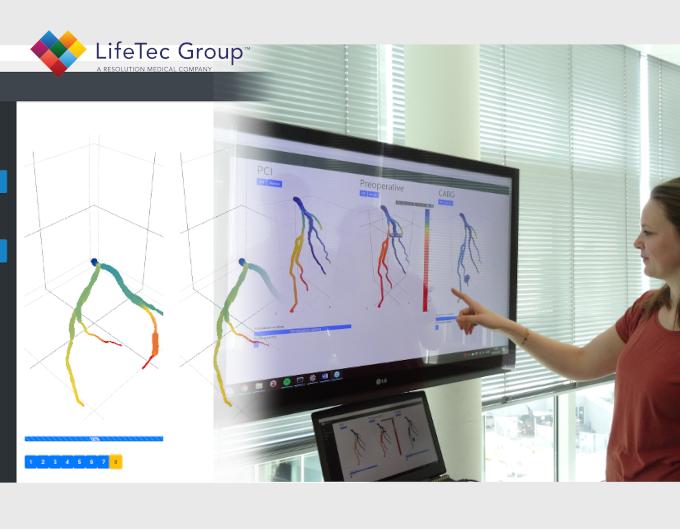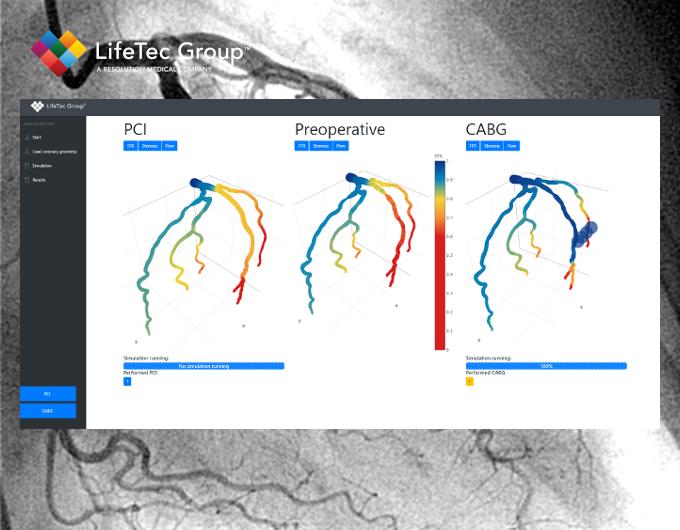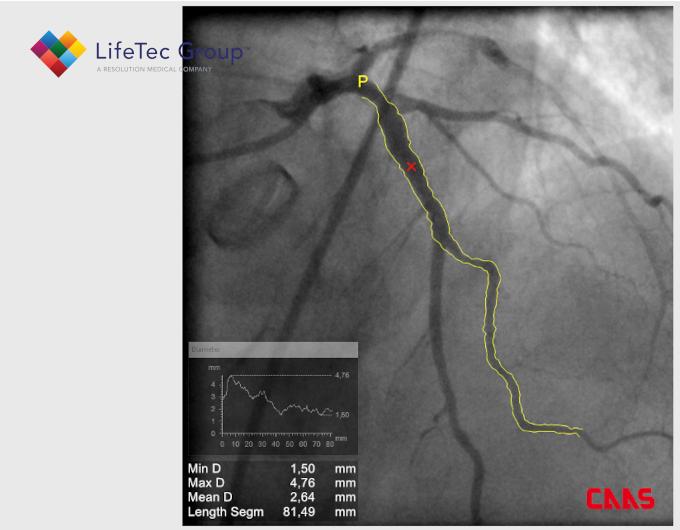AngioSupport is a clinical decision tool to support the cardiac team with treatment planning for patients with coronary artery disease (CAD).
Using AngioSupport, stenoses as well as their severity are easily revealed within seconds by computation of blood flow and pressure inside the coronary arteries. The conventional coronary angiograms are the only input necessary. Moreover, clinicians can perform multiple interventions virtually and compare the predicted outcome of each intervention.
The quest
Cardiac teams in larger hospitals discuss the treatment of multiple patients with CAD. These patients have one or multiple severe occlusions in the coronary arteries and for each patient, a treatment plan is defined, typically consisting of coronary artery bypass graft (CABG) surgery or percutaneous coronary intervention (PCI).
The decision between these treatments is currently based on studying coronary angiograms and the experience of the cardiac team. However, in case of multiple occlusions, diffuse coronary disease or complicated vasculature, choices in the position, length or diameter for a CABG or PCI is challenging.
Therefore, AngioSupport is developed; an interactive tool to predict the outcome of CABG or PCI to support clinical decision-making of coronary interventions.
AngioSupport | Interface developed and presented by Junior R&D Engineers Bettine van Willigen and Tim van den Boom

AngioSupport - Interface

These coronary angiograms are segmented by the CAAS software of Pie Medical Imaging to generate a 3D structure of the coronary arteries

What was done
The 1D wave propagation models developed at Eindhoven University of Technology to compute the blood flow and pressure inside the coronary arteries were used.
The models were adapted to the requirements of AngioSupport, for example, to achieve a fast computational time.
In cooperation with Dr. Pim Tonino (cardiologist at Catharina Hospital), we designed an interface such that the analysis of stenoses is straight forward, performing interventions is practical, and results are easily viewed.
In addition, coronary angiograms and pressure measurements were received from Catharina Hospital Eindhoven to validate the model.
These coronary angiograms are segmented by the CAAS software of Pie Medical Imaging to generate a 3D structure of the coronary arteries. (see image(s) above)